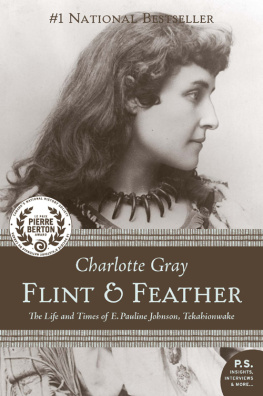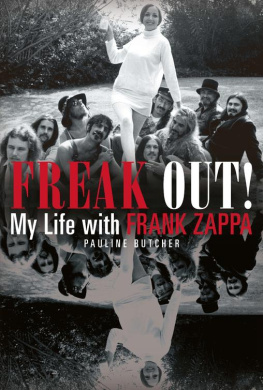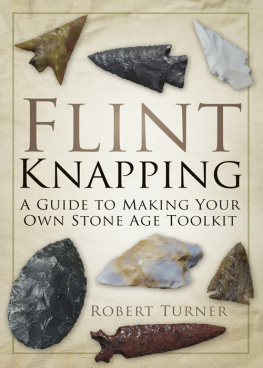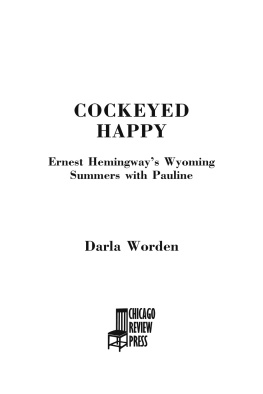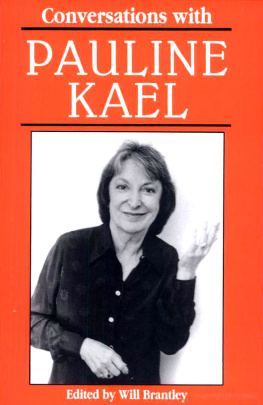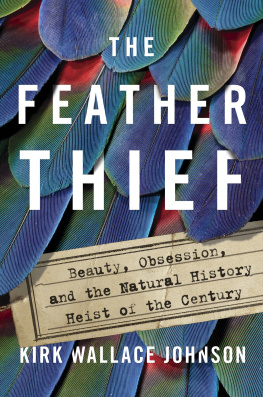1
THE ROMANCE OF CHIEFSWOOD
W HEN the young Pauline Johnson stood in the hallway of Chiefswood, the family home on the Grand River, on a summers afternoon, she had the happy certainty that she was in the centre of her own small universe. All around her flowed the sounds of the busy Johnson household. From the study on her left seeped the growl of discussion as her father, George Johnson, held court with various neighbours. From the drawing room on her right came the plink of awkward chords as her older brother Beverly picked out the latest dance tune on the Heintzman piano. Breathy chatter flowed from the parlour, where her sister Eva helped the maid set out the silver tea service. Allen, the brother closest in age to Pauline, was probably in the kitchen garden, gorging himself on the last raspberries of the season. If Pauline glanced up the elegant staircase, she could see her mother, Emily Johnson, carefully adjusting her tea gown before she descended to the ground floor.
Even on the hottest July day, the hallways dark walnut panelling and high ceilings kept the house cool. Pauline loved to lean against the hand-turned railing, close her eyes, run her finger along a slippery brass stair rod and breathe in the aromas of fresh-cut flowers, newly baked bread and furniture polish. She adored Chiefswood, the creamy stucco villa her father had built in 1855, six years before she was born. She spent her days wandering its grounds amidst the majestic old walnut, oak and elm trees, watching squirrels scampering among the branches and crows wheeling overhead. In early spring, violets

The graceful symmetry of Chiefswood, built by Paulines father in the 1850s, reflected the ideal of harmony for which the family strove.
bloomed in the shadows. In late summer, pungent walnuts crunched underfoot. In the evening Pauline often ran down to the riverbank, her little dog, Chips, scampering alongside, to watch the mauves and golds of the sunset reflected in the water. And at night she would lie on the grass, gazing up at the brilliant stars twinkling in the inky vastness above her. Wisps of the romantic poetry that her mother read to her each afternoon drifted through her mind. She silently repeated to herself some of her favourite lines, almost intoxicated by the emotions of longing and loss that drenched the languorous verses about blossoms, clouds and seasons.
Maybe Paulines idyllic world occupied only a trackless patch of pink on the margins of the far-flung British Empire. Maybe Queen Victoria, whose stern likeness hung in Chiefswoods dining room, would never visit this isolated outpost of her mighty realm, let alone encounter her North American subjects on their own land. Even the name of the region in which Pauline lived, a vast and largely unexplored forest stretching from the Great Lakes northward, was uncertain and fluid. Its residents usually called it Upper Canada, the name it had been given by the British in 1791, but in 1861, when Pauline was born, it was officially Canada West (part of the Province of Canada), and six years later at Confederation it would be retitled Ontario. But Paulines surroundings were all that she knew and, she assumed with childish confidence, all that she needed to know. Most important, she understood even as a child that Chiefswood itself reflected her parents larger universe, which blended two distinct traditions: the Mohawk heritage of Paulines father and her mothers British roots.
Like many houses of the period, when travel along waterways was more comfortable than along rough roads, Chiefswood had two front doors. As Pauline sat on the bottom stair, she could hear, beyond the large oak door ahead of her, the sound of horse-drawn carriages travelling along the dusty rutted track that led to Brantford, twelve miles (nineteen kilometres) away. Pauline occasionally accompanied her mother along that track when Emily Johnson visited the bustling manufacturing town to buy fabric and trimming for her own and her daughters gowns. If Pauline peered around the newel post to the other heavy front door, which was usually left ajar, she could look through the wooded parkland towards the sinuous, slow-moving Grand River. Her father loved to walk out of this door, stroll down to the riverbank and chat with friends waiting for ferryman Jessie Green to winch the old wooden boat along its chains from the opposite bank. George Johnsons youngest child often joined him there, slipping her small hand into his and admiring the dugout canoes of her Iroquois relatives as they skimmed across the water. The creak of the ferrys rusty old cogwheel and the splash of the heavy chains in the water haunted Paulines dreams all her life.
Whether visitors arrived by road or by water, Chiefswoods two front doors welcomed them. The houses symmetry, with its matching French windows and elegant hipped roof, reflected the ideal of harmony that Paulines parents were determined to embody. Throughout her life, Pauline extolled her parents rapport: They loved naturethe trees, and the river, and the birds. They loved the Anglican Church, they loved the British flag, they loved Queen Victoria. They loved music, pictures and dainty chinaThey loved books and animals, but most of all, these two loved the Indian people, loved their legends, their habits, their customs. They also loved to demonstrate, to an impressive procession of visitors, that European settlers and the red race, in the parlance of that era, could live side by side in peace. Chiefswood was as graceful a mansion as could be found in any newly settled British community in Upper Canada, but it was firmly situated within the reserve of the Six Nations Indians. Paulines parents were determined that their sons and daughters would reflect credit on their mixed heritage. The children, Pauline later wrote, were reared on the strictest lines of both Indian and English principles. They were taught the legends, the traditions, the culture and the etiquette of both races to which they belonged.

Pauline Johnson, aged 3: all her life, Chiefswood haunted her dreams.
Yet it was a curious education. George Johnson passed on to his children the legends and history of his Mohawk people, but he never taught them to speak the language fluently, so that they never felt they belonged on the Six Nations Reserve. His sons never went through the Mohawk initiation rites that their father had undergone, and his daughters never wore Indian costume. For her part, Emily Johnson had a horror that her children might be considered plebeian. Through sharp reprimands and disapproving frowns, she instilled in them a need to please her and an acute English sensitivity to what others might think of them. So her sons and daughters grew up prim and inhibited, unable to relax completely with anybody outside the cocoon of their own family. Only Pauline would learn to move with ease in European-born society.
Though the Johnsons were a close-knit family, love and a shared sense of purpose could not obliterate the tension under the tranquil surface. Emily and George Johnson wanted to protect their children from the kinds of stress that each of them had sufferedthe loneliness felt by a rejected child, the confusion of a young man caught between two value systems, prejudice against an interracial marriage. Perhaps the best illustration of the pressures that made Chiefswood an emotional fortress comes from an unpublished memoir by Evelyn (Eva) Johnson, Paulines older sister. One day, wrote Evelyn, her brother Beverly brought home a puppy and insisted he was a purebred fox terrier. Pauline, the scrappy younger sister, insisted he was not purebred and took the puppy to Mr. Glasgow, the dog fancier, to prove her point. She returned at dinnertime and triumphantly reported that Mr. Glasgow agreed with her. Beverly snapped that Mr. Glasgow knew nothing, that the dog was a purebred fox terrier.

